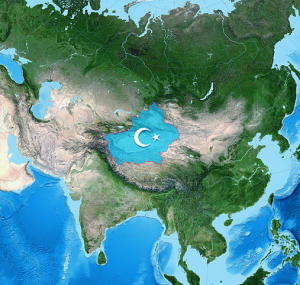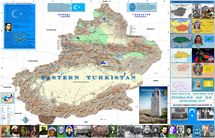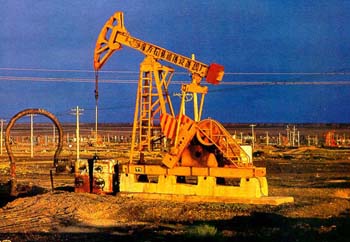
East Turkistan, named by the Communist Party of China under Mao Zedong’s reign in 1955 as the Xinjiang (East Turkistan) Uyghur Autonomous Region, lies in the heart of Asia. It is the only province within China today to have had self rule as an independant nation.
The First East Turkistan Republic (ETR), officially the Turkic Islamic Republic of East Turkistan (Uyghur: شەرقىي تۈركىستان ئىسلام جۇمھۇرىيىتى), was an Islamic republic founded in 1933. It was centred on the city of Kashgar. Although primarily the product of an independence movement of the Uyghur population living there, the ETR was Turkish-ethnic in character, including Kyrgyz and other Turkic peoples in its government and its population.
The Second East Turkestan Republic, commonly referred to simply as the East Turkestan Republic (ETR), existed in the 1940s (November 12, 1944 – December 20, 1949). It began as a revolution in three northern districts (Ili, Tarbaghatai, Altai), resulting in the Ili Rebellion.
Situated along the fabled ancient Silk Road, it has been a prominent center of commerce for more than 2000 years. The land of East Turkistan gave birth to many great civilizations and at various points of history it has been a cradle of scholarship, culture and power.
The current territorial size of East Turkistan is 1.82 million square kilometers. The neighbouring Chinese province annexed part of the territory as a result of the Chinese communist invasion of 1949.
East Turkistan borders with China and Mongolia to the east, Russia to the north, Kazakhstan, Kyrgyzstan, Tajikistan, Afghanistan, Pakistan and India to the west, and Tibet to the south.
East Turkistan has a rich history and a diverse geography. It has grand deserts, magnificent mountains, and beautiful rivers, grasslands and forests.















